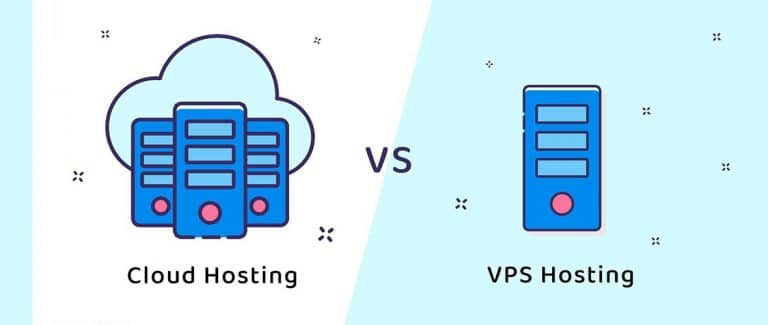Building Kubernetes on Azure resilient application
Kubernetes is an open-source container orchestration arrangement for automating software application deployment, scaling and management. It was developed by google computing engine platform, maintained by cloud-native computing foundation.
Many cloud services provide a Kubernetes based platform or infrastructure as a service ( PaaS or IaaS) on which it can work as a platform providing service. It offers excellent help for the cloud server, and cloud hosting management platform, both Google and Microsoft Azure. Microsoft Azure-Kubernetes teams always working for improving the Azure-Kubernetes platform for top-level enterprise-grade service to their client. It provides an open and portable ecosystem for a great cloud solution. The Azure Kubernetes offer extensive agility and productivity that top cloud platform enterprise is desire.
Enhancing latency and functional efficiency:
One of the critical factors of cloud acceptance is minimizing latency. It took a lot of time to manage the computer to set up a cluster on Azure and spend only five minutes for design. The Microsoft Azure team provide quick OS disk support which makes the customer cluster even quicker. This framework makes them better agility to the customers. On the other hand, latency means how you can perceive and response to functional challenges.
The Azure Resource Health can warn you if your cluster turns to detrimental for any reason. The Microsoft Kubernetes Azure teams provide node image updates that can manage with your cluster bugs or foibles. Furthermore, it is cheap due to its container traffic. During a pandemic situation, the cost-saving option from Kubernetes- Azure Corporation may game-changer or make a massive profit for your cloud management company.
Stable architecture for the Kubernetes on the Azure:
The critical vault at Kubernetes service provides extensive security to store your credentials, certificates and other top secrets documentation in state of the art, flexible secret store. You can manage your data easily through the applications available at Azure Kubernetes cluster platform.
This integration is constructed on the back of an open container storage interface (CSI) driver that the Azure team built and make open-sourced for the entire Kubernetes community. The open-source platform of Azure – Kubernetes framework complements and adds new features within a short time because numerous developers are trying to improve it. If you interested in familiar with cloud-native workloads, ensure your firm is following Microsoft policy, check out the guide to Kubernetes best practices. They guide you to unify firewalls policy and ensure that you have security and agility in yo
Most important and significant term and condition for utilizing the cloud computing platform is protection. The Kubernetes-Azure provide the most extensive secure data management framework through policy integration and Azure active catalogue identify for pods and cloud-native assurance. The Kubernetes-Azure platform creates linked between Azure key vault and the Azure Kubernetes service. our cloud-native environment.
How to conduct Kubernetes on Azure:
The Azure Kubernetes server (AKS) offers an extraordinary for supervising containerized application program. It provides, Kubernetes sever less, continuous automated integration and ongoing supply experience and extensive protection and administration on an administrative level.
The production team of Kubernetes works continuously to improve the design, produce and scale applications swiftly. Azure DevOps assist by utilizing the intuitive build method to create Docker footage for quicker deployments and trustworthiness. The main reasons for using Azure Kubernetes service is the quality resources and framework into AKS cluster.
Self-governed Kubernetes in Microsoft Azure:
There are numerous ways to have Kubernetes utilize and monitored in Azure. The automated choice demonstrated hoe to use Azure Kubernetes Service(AKS) engine to install a cluster for linking with Azure CNI plugin and calico for compliance of network strategy.
This policy’s advantage is the worker nodes, and pods assign on IP addresses affiliated with Azure network user interface VNET network pool IPs and no needed NAT access resources from the external cluster of Kubernetes. Other programs may create a better environment for your framework.
How Kubernetes provides you with extensive services:
Kubernetes provides you with an infrastructure to run distributes method flexibly. It takes care of grading flipping for your application. It includes distribution pattern. For example, Kubernetes can handle a canary deployment at your network framework. The Kubernetes offer you
1. Azure site recovery:
For business applications, data security much needed. The Kubernetes provide extensive Azure site recovery by offering high availability, data security, disaster recovery, strict accomplishment SLAs and mixed/multi-cloud operations are non-conveyable. For example, the acceptance of Kubernetes for mission-critical venture application limited unless this prerequisite can fulfill
2. Service revelation and load reconciliation:
Kubernetes can disclose a container utilizing the DNS name or managing their IP address. Depending on the high traffic network, Kubernetes can manage load balance and broadcast the persistent network traffic.
3. Storage coordination:
Kubernetes is one of the best cloud management platform for cloud hosting and managing automatically. It allows a confidential storage system as your wish. As an example, local storages, cloud service provider, Azure site recovery.
4. Machine driven rollouts and rollbacks:
You can explain the required state for your installed contains utilizing Kubernetes and turn to the desired shape from actual state at a controlled rate. You can computerize Kubernetes to build new containers for your stationing, eliminate existing boxes and manage all their resources to the new container.
Automatic bin packing:
The Kubernetes can utilize to manage containerized tasks. The container needs too much CPU and memory(RAM). Kubernetes can work by setup containers onto your nodes to make the optimum utilization of your resources.Self- curing: Kubernetes reboots containers that fail, substitute containers kill containers that don’t react to your user-defined health check and don’t promote them to clients until they are available for serving.
Identity and security supervision by Azure-Kubernatics services:
To curb access of cluster resources Azure Kubernatics service Kubernetes RBAC lets you manage access to Kubernetes assets and namespaces and authorization to those resources. You can also set up an AKS cluster to combine with Azure Active Directory(AD) with Azure AD consolidation. Kubernetes access can adapt based on existing identity and group participation. Your current Azure AD client and group can offer AKS resources with a unified sign-on experience.
Concealed and configuration administration:
Kubernetes assist you for reserve and handle sensitive data such as passwords, OAuth tokens and SSH keys. You can expand and renovate secrets and application arrangement without restoring your container footages and revealing secrets in your stack arrangement
Penetration with HTTP application convoying:
The HTTP application routing drives it easy to access applications installed to your AKS cluster. The HTTP application routing result setup an ingress controller in your AKS cluster. The publicly available DNS names are auto designed by the deployment of the application. The HTTP application routing created a DNS zone and embedded it with the AKS cluster. You can then arrange Kubernetes ingress funding as usual.
Development tooling amalgamation:
Kubernetes has an incredible and most effective ecosystem of improvement and administration tools such as Helm on the Kubernetes extension for visual studio code. On the other hand, Azure Dev spaces offer a rapid and extensive Kubernate progress experience for teams.
The Azure DevOps contrive to provide a simple solution for rapprochement existing code and Git repository into Azure. The DevOps provides a pipeline framework for CI, set up a release pipeline for CD and then build an Azure application in-depth resource for observing.






